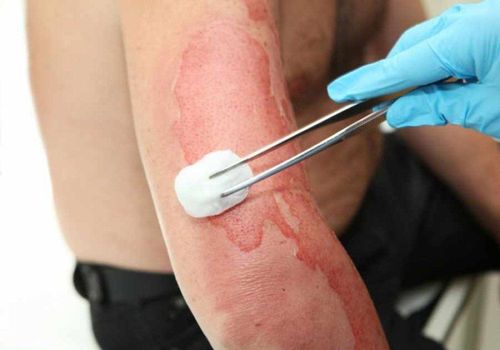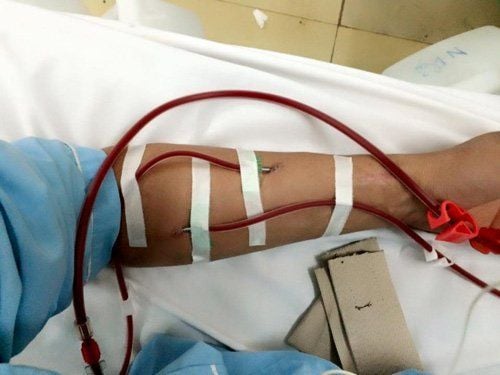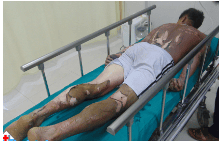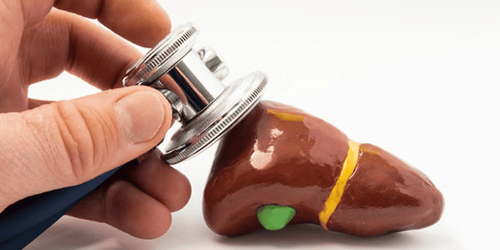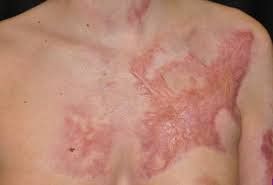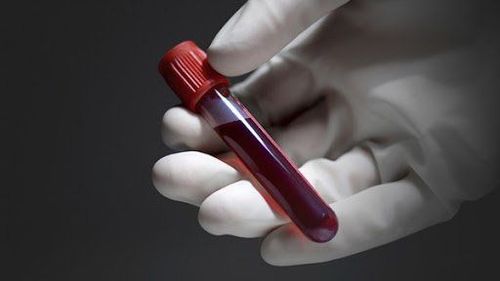This is an automatically translated article.
The article was written by Specialist Doctor II Phan Phi Tuan - Head of General Surgery Department, Department of General Surgery - Vinmec Phu Quoc International General Hospital.Burn shock is a state of sudden collapse of all vital functions of the body caused by burn injury. Burn shock is a common pathological state immediately after a burn, especially in the case of extensive and deep burns, occurring in the first stage of the burn disease, usually within the first 72 hours.
1. How dangerous is burn shock?
Burn shock is common in patients with a large burn area and great depth: if the burn area is less than 10% of the body area, there is usually no shock.
For children, burn area > 10 % and adults > 20 %, the possibility of burn shock is high, it is necessary to set out the work of detecting, preventing and treating burn shock. The wider the burn, the greater the depth, the higher the shock rate, the more severe the shock.
Frank G (1960) gave a calculation to predict the rate of burn shock. According to Frank .G for every 1% of the superficial burn area: 1 Frank index and 1% of the deep burn area: 3 Frank numbers.
If Frank's stats:
Under 30 Shock rate 5%. From 30-55 The rate of shock is 44%. From 56-120 The rate of shock is 80-90%. Over 120 Shock rate is 100%. Skin burns combined with respiratory burns: shock has a high rate (over 80%), often severe.
In children and the elderly: The rate of shock is higher than in adults. If the Frank index is over 71 or the burn area is more than 20% deep => 100% shock rate.
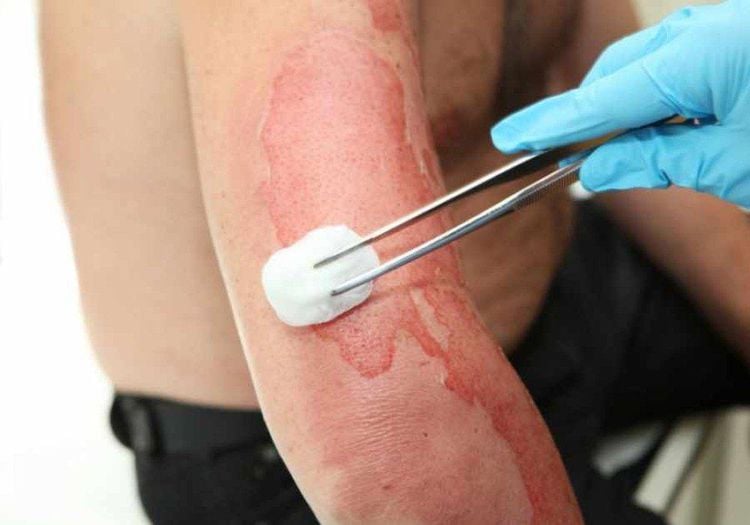
Vết bỏng càng lớn và sâu thì tỷ lệ sốc càng cao
2. Causes of burn shock
2.1 Excessive pain The skin has a rich nervous system, so when injured, it will stimulate many nerve endings, causing excitement, then inhibiting the central nervous system, disordering all organs , systemic and shocking.
Due to circulatory disorders: may be due to volume depletion, disseminated intravascular coagulation, hemolysis. Volume depletion: Decreased circulating blood volume is a common cause of burn shock. When the patient is severely burned, up to 30-40% of blood circulation can be reduced and shock can occur. There are several mechanisms that reduce circulating blood volume.
Due to fluid drainage, plasma from the vessel lumen to the intercellular space. The cause is capillary damage, microcirculation disorder causing vasodilation, increased permeability. Outflow of plasma in the form of edema in the burn area, the vicinity and also a systemic phenomenon. In addition, it is also due to the difference in osmotic pressure due to the reduction of intravascular protein. As a result, plasma and macromolecules escape into the lumen, causing fluid loss and edema. Plasma leakage appears as early as 5 minutes later, peaks at 8-12 hours, with severe burns can persist 72 hours after burn, can reach 2-5l/24 hours.
Fluid loss through burns: in burns, fluid loss through the skin due to evaporation increases 7-19 times. Fluid loss due to evaporation can be up to 0.84 ± 0.04 ml/cm2/ 24 hours.
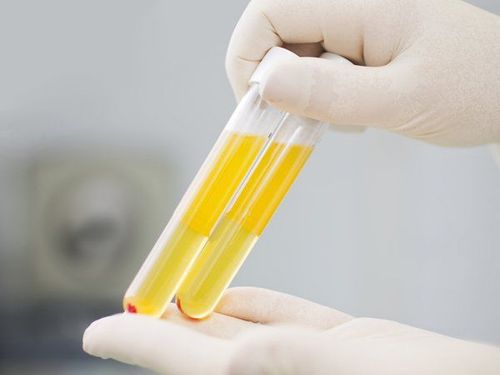
Bỏng gây thoát huyết tương ra khoảng gian bào
In addition, fluid loss through the respiratory tract, through vomit.
Diffuse intravascular coagulation: due to microcirculation disorder (due to dilation, plasma leakage, blood loss) leading to disseminated intravascular coagulation => obstruction => tissue necrosis. Hemolysis: Breakdown of red blood cells due to direct effect of heat factor plays an important role. If the area of the burn is large, the hemolysis can be up to 30-50%. Consequences of the above disorders lead to lack of oxygen in the tissues, disturbances in water and electrolytes (e.g., potassium out of cells and sodium in cells) and disturbances in osmotic pressure. Acid-base balance disorder. Heart failure due to exertion, blood clotting disorder => Circulatory collapse.
3. Absorption of toxins and excessive inflammatory response
When high-temperature agents cause burns, three areas will be formed: the central zone (where it is in direct contact with the burn agent, usually the necrotic area), the surrounding sub-necrotic area, and the congested area. in the outermost (manifested vasodilation, increased permeability, drainage).
Pathological processes often occur in the sub-necrotic area (the area where the temperature is about 450C - 600C when burned) with reversible or irreversible pathological changes. In this area occurs a series of disorders such as pain, microcirculation disorders causing tissue hypoxia causing cell damage.
This process causes the release of proteolytic enzymes, creating toxic substances such as adenosine, histamine, leucotoxin, proteinase, desoxyribonuclease, cathepsin...... Some scientists have found a strong burn toxin. 1000 times more than endotoxin is LPC (lipid protein complex) which is a lipid and protein nature formed from burned skin.
This substance causes cell damage, hemolysis, increases cell membrane permeability, causing fluid drainage... In addition, this substance also causes systemic inflammatory response leading to organ dysfunction, multi-organ failure.
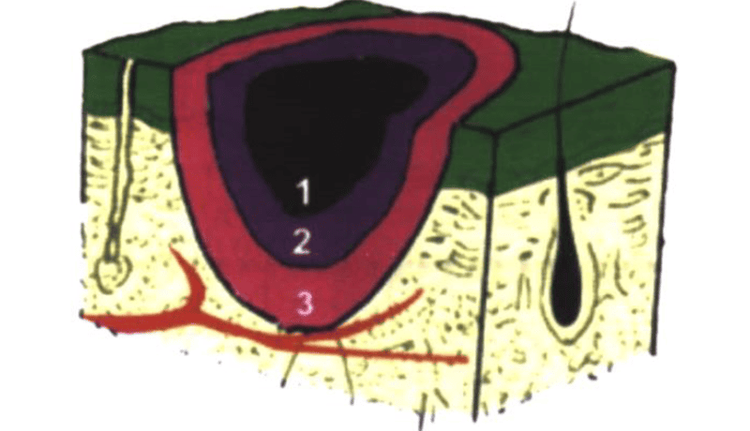
3 vùng tổn thương của bỏng
4. Bacterial infections
Recent experimental studies show that immediately after a burn, there is a shift of bacteria from the digestive system into the blood vessels and lymphatic system, from there entering the internal organs and entering the circulation. This suggests the role of gut bacteria as well as explaining the sepsis situation immediately after burns.
Vinmec International General Hospital is one of the hospitals that not only ensures professional quality with a team of leading medical doctors, modern equipment and technology, but also stands out for its examination and consultation services. comprehensive and professional medical consultation and treatment; civilized, polite, safe and sterile medical examination and treatment space.
Customers can directly go to Vinmec Health system nationwide to visit or contact the hotline here for support.





